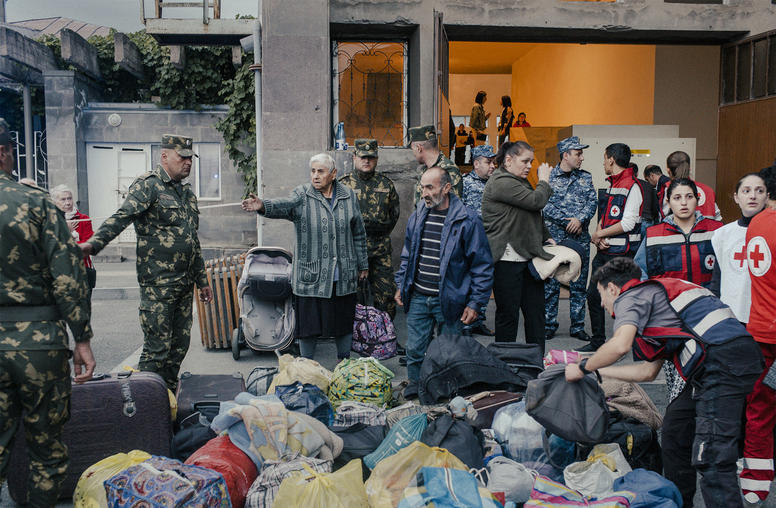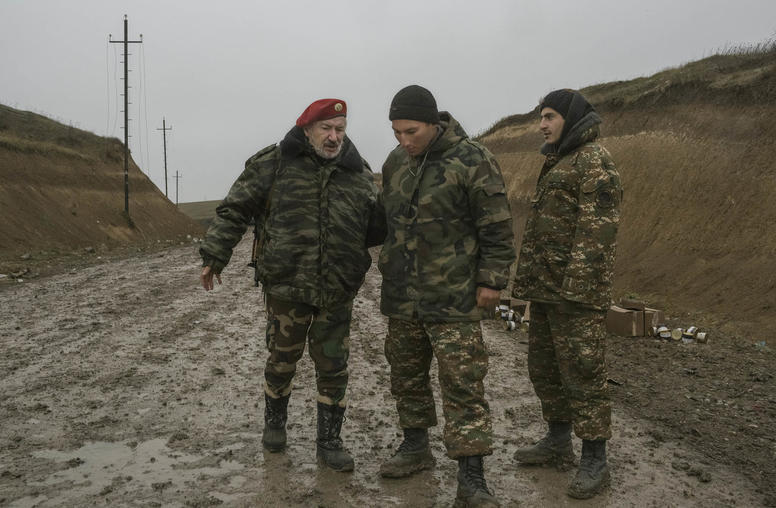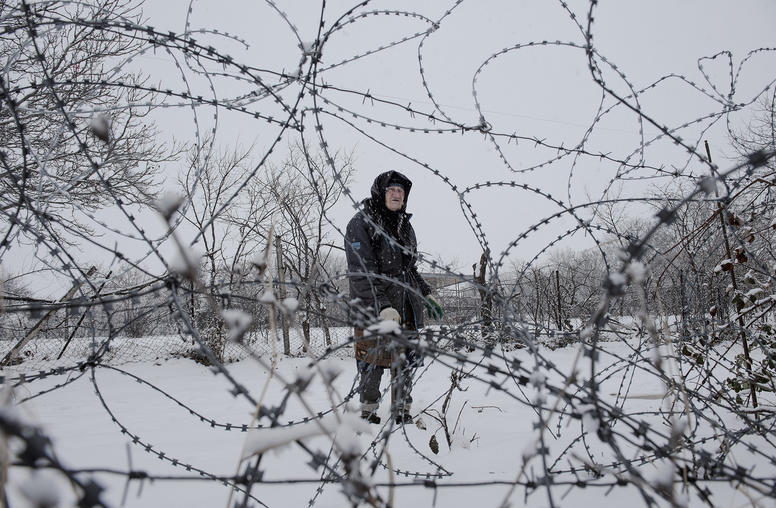A Fire in the Garden: Can We End the Nagorno-Karabakh War?
The conflict has festered for decades. Now it has drawn in Turkey and grown more dangerous.
Amid the world’s profusion of wars, COVID crisis and turbulent U.S. elections, a reader could overlook the century’s worst eruption of bloodshed between Armenia and Azerbaijan. But the revival this week of war in the Caucasus region should galvanize policymakers in Washington, Europe and Moscow to lean in hard and resurrect vigorous peacemaking for the first time in recent memory. While it’s unclear whether a full resolution can be achieved in any near future, this week’s fighting signals the risk of neglect: a dangerous, wider war.

The battle is over Nagorno-Karabakh, a lush, rugged highland whose name evokes “the garden in the mountains.” The dispute over this territory, long populated mostly by Armenians but internationally recognized as part of Azerbaijan, is older than the states fighting it. When the Soviet Union collapsed in the 1990s, the two sides fought a war that left Armenians holding the region, plus surrounding Azerbaijani farming districts, and hundreds of thousands of Azerbaijanis expelled from their ancestral homes.
In the quarter-century since then, international peace efforts have failed to advance any resolution, managing only to contain the periodic eruptions of violence across the zone of bunkers and minefields snaking around south Caucasus hillsides and villages. Analysts of the region have warned that the war could revive in a more dangerous form.
On Sunday morning, the war roared back to life. Azerbaijan reported “large-scale provocations”—Armenian shelling of Azerbaijani military positions and villages—and 90 minutes later announced “a counter-offensive operation of our troops along the entire front.” Armenian statements said Azerbaijan opened fire unprovoked. Hundreds of people are now reported to have been killed in gunfire, artillery bombardments and drone strikes.
A New Complication: Turkey vs Russia
This week’s fighting features new complications—notably a deeper role then ever by Turkey, whose interests in the Caucasus oppose those of the region’s historically dominant power, Russia. Turkey has long offered support for ethnically Turkic Azerbaijan, but early in the crisis acquiesced to Russia in urging a negotiated solution. In the past few years, Turkish President Recep Tayyip Erdogan has shifted that position to full-on backing of Azerbaijan’s claims.
Effectively Turkey, which previously was in a position to help mediate in the conflict, is now clearly a party to it. Erdogan reflected that change in declaring this week that international mediation by a group of 11 nations has failed and so should be ignored.
Turkey’s diplomatic shift has accompanied other changes in its relations with Azerbaijan. “In recent years, Turkey has strengthened economic cooperation with Azerbaijan, especially around energy sources and pipelines,” notes Esra Cuhadar, a political science professor in Turkey and USIP expert on peace processes. Turkish news media also have reported that Azerbaijan has strengthened its military with Turkish help. “In the previous eruptions of crisis, Turkey’s support was not of a military nature, and that would be a new development that can tilt the existing stalemate in the conflict,” Cuhadar said.
Turkey’s deepened role in the Nagorno-Karabakh conflict risks replicating a pattern of Turkish-Russian rivalry that fuels violence elsewhere, Cuhadar noted. Turkey and Russia currently provide weapons, fighters or other fuel for the wars in Syria and Libya. While analysts suggest Turkey and Russia will strive to avoid any direct armed conflict in this dispute so close to both of their borders, the risks of any accidental collision will raise questions for the United States and Turkey’s other NATO allies on how to respond.
A Vacuum of Political Will
A solution must start with building political will among Armenians, Azerbaijanis and their leaderships—and among key international players: the United States, leading European states, Russia and Turkey. Can this new spasm of violence help provide the needed focus?
Political courage for the risks of peacemaking has been hard to find in Armenian and Azerbaijani power structures. “When the Soviet Union imploded, leaders in its republics defaulted to nationalism to win political support,” noted USIP advisor Ann Phillips, a European security specialist who has studied the conflict. The nationalist divisions were nowhere more virulent than over Nagorno-Karabakh, where war broke out within months. “The 1992-94 war killed thousands of people and drove over a million from their homes,” Phillips said, and “deeply held grievances embedded in victimhood on both sides limit the room for Armenian and Azerbaijani leaders to compromise.” Leaders in both countries have used the conflict to rally domestic support and distract their citizens from severe domestic problems of governance, democracy and economy.
The United States, Europe and Russia have pursued peace efforts on Karabakh through a working group under the Organization for Security and Cooperation in Europe. This “Minsk Group,” led by the United States, France and Russia, has prevented or calmed outbreaks of violence, effectively managing the conflict rather than achieving any real progress in resolving it. The group, which includes Turkey, now will find its mediation effort complicated by Turkey’s more assertive posture.
The international effort also is ultimately constrained by Russia, which has strategic influence to advance peacemaking, but strategic reasons to keep the dispute unresolved. Moscow has a formal alliance with Armenia, including a military base there. It also keeps strong relations with Azerbaijan, which it calls a “strategic partner,” and is the biggest supplier of weapons to both sides. While Russia wants no uncontrolled war, or Turkish involvement, in a region it regards as its sphere of influence, the Kremlin has found benefit in a conflict that keeps both Azerbaijan and Armenia in positions of dependency.
Peacemaking is Possible—If It’s a Priority
The past 20 months showed glimmers of hope, and the formidable obstacles, for peacemaking. Within weeks after Armenians swept aside a long-ruling party and elected Nikol Pashinyan prime minister in December 2018, the Armenian and Azerbaijani foreign ministers met with international mediators and agreed to take “concrete measures to prepare the populations for peace.” In 2019, cease-fire violations declined. Each country freed a prisoner taken in the conflict and allowed a visit by journalists from the other side. Pashinyan and Azerbaijani President Ilham Aliev held a conciliatory meeting. USIP, in partnership with the State Department, has been exploring ways of building on the tentative interest in seeking peace shown by the two sides.
Yet amid 2019’s conciliatory gestures, the rivals continued their hardline rhetoric. The leaders’ dialogue soon soured. Azerbaijan’s leadership “may have overestimated Armenia’s willingness to compromise in exchange for the end to geographic and economic isolation” that is forced upon Armenia by a conflict that has closed most of its borders, said Phillips.
The new fighting has set back the peacemaking effort and underscores ways that it must be strengthened. Peace processes often fail because they neglected to include all those with potential roles in a resolution, USIP analysts noted. The current Minsk Group does not include Georgia, the third south Caucasus nation.
A stronger process “also will need to reach down to engage civil society in helping to do that preparation for peace that the two sides spoke of last year,” said Pamela Aall, a USIP advisor on conflict prevention and management. U.N. officials, human rights organizations and other groups have noted that Azerbaijan has tightly restricted civil society and independent media.
Even a process that gathers the necessary attention and focus from government and civil society in the combatant countries, and from the key foreign governments and mediators, will not make progress, Aall and Phillips say, unless it can pull the dialogue away from the zero-sum battle in which Armenians and Azerbaijanis have locked it for decades. A step in that direction, said Phillips, is to “work with local partners to help break the downward spiral of conflict, and re-focus the discussion on practical solutions to common problems.”



